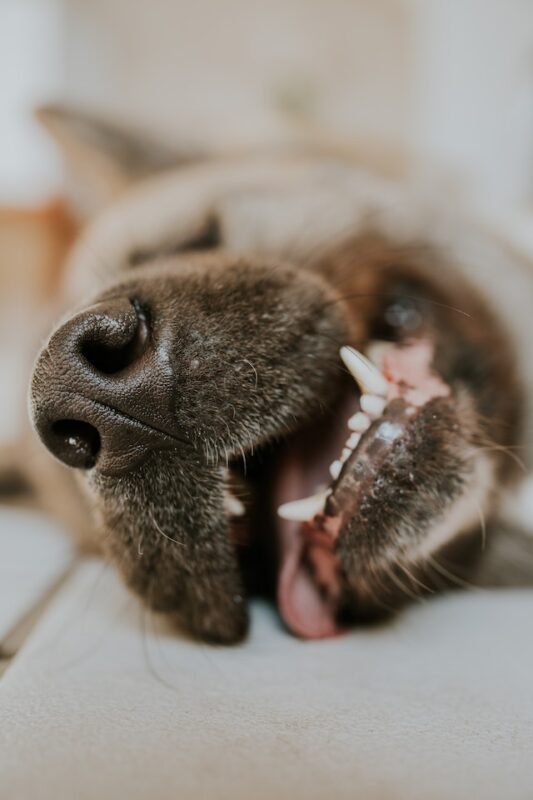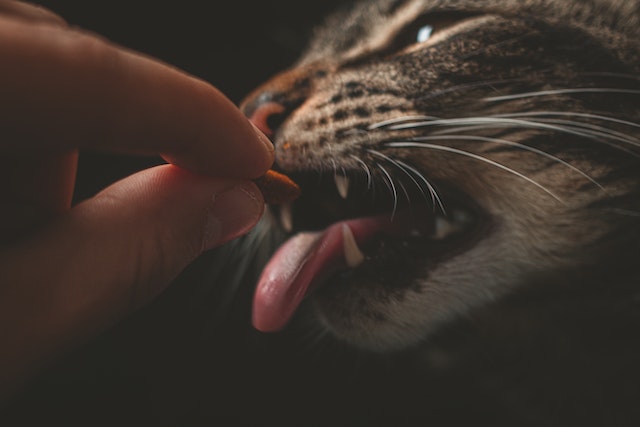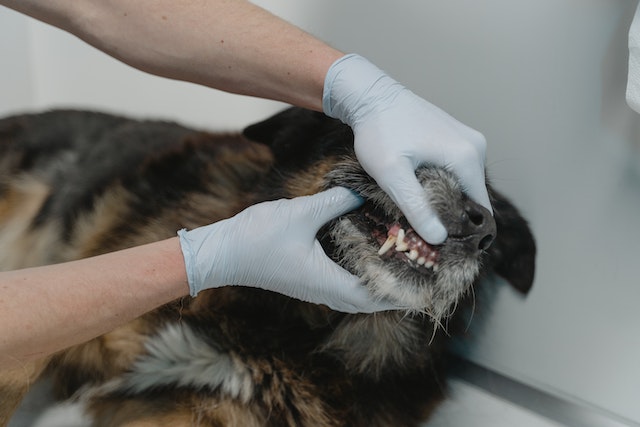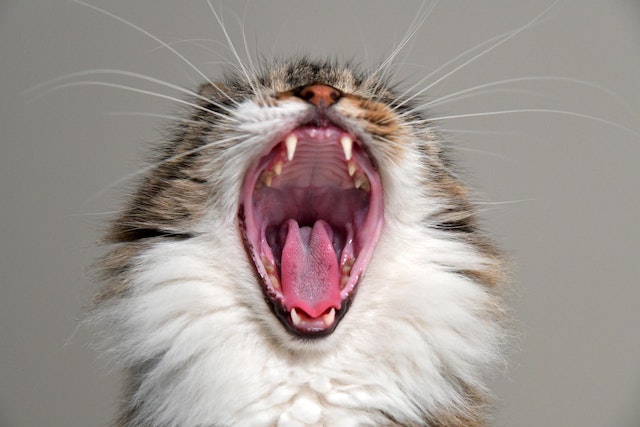Tips for Pet Oral Health
Posted: 02/07/2023 | BY: Jenna Bruce | Categories: Health problems , Pet care , Top Tips
Every time your dog licks your face do you gag a little from their bad breath? When your cat yawns and you get a whiff, do you scrunch your face in horror? While popular belief suggests that “doggy and kitty breath” is normal, the fact is abnormally bad breath is an indication of poor pet oral health. If left unchecked, this can lead to the development of painful dental disease.
Tips for Pet Oral Health

As can happen with humans, when bacteria, plaque and tartar are allowed to build up on our pets’ teeth and gumline, dental disease can develop. Not only can this cause pain in your pup or cat’s mouth, but the buildup of bacteria can actually be absorbed into their bloodstream, wreaking havoc on their other major organs.
Here are 4 tips to protect pet oral health:
Early Detection
Did you know that by the age of three, most dogs and cats have some degree of dental disease? That smelly breath is one of the biggest indicators, as is a yellow / brown color to their teeth and red, swollen gums.
It is incredibly important to detect dental disease as early as possible, which is why the AAHA recommends a comprehensive dental evaluation be a part of your pet’s yearly wellness checkup.
Clean Their Teeth Regularly
It’s important that you clean your pet’s teeth regularly using an appropriate toothbrush and toothpaste. People toothbrushes are often too large and our toothpaste contains ingredients that may be dangerous to our fur babies. Try to clean their teeth 2-3 times per week.
Include Crunchy Food or Treats in Their Diet

Hard and crunchy food and treats helps to scrape away soft tartar from your pet’s teeth and gumline before it can harden. There are special dental treats for dogs and cats you may want to consider purchasing. As always, speak to your vet if you have any questions about pet products.
Lavish Them with Chew Toys
There are many toys on the market that help your dog and cat chew and naturally clean their teeth. Soft, plush toys drive your pet’s natural instinct to sink their teeth into prey. Not only do these toys help to scrape off the plaque and tartar, but they also massage your pet’s gums and strengthen their teeth.
What Happens if My Pet Develops Dental Disease?
Even with the best of intentions, dental disease will sometimes develop. This can happen for a number of reasons. Your dog may have broken a tooth biting down on something hard, giving pesky bacteria even more access to where they shouldn’t be. Or you may have adopted an older cat that spent their first few years on the streets. Whatever the reason, there may be those times when a professional dental cleaning becomes necessary.
Signs Your Pet May Need a Dental Cleaning

Dogs and cats are notorious for hiding their pain, but there are some definite signs something may be going on with their mouth.
Behavior Changes
Is your pet usually very affectionate but now they seem more moody and snap easily at other pets in the house?
Appetite Changes
If your pet seems less interested come meal time, that is a definite sign that something is going on. And often that something is dental disease that is causing pain in their mouth.
Lethargy
Just as with humans, our pets can feel lethargic when they aren’t feeling well. If your pup or cat is normally very playful and full of energy but now you notice they are sleeping more, this is a sign they are not feeling well.
Many pet parents report that after their pet had a professional cleaning, they were back to acting like their normal self again.
What Happens During a Pet Dental Cleaning?

If your vet feels a professional cleaning is in order, she may decide to take x-rays of your pet’s mouth. Often teeth that appear normal during a physical examination are found to be rotten to the roots in an x-ray. These teeth will need to be removed.
These x-rays are usually done right before the procedure, when your pet is already under general anesthesia. The anesthesia makes it easier for your vet and vet techs to get the job done and ensures your fur baby isn’t stressed.
While anesthesia is safe, your vet will want to do bloodwork on your pet to screen for any potential underlying disease. If the bloodwork looks good, your pet will be scheduled for the procedure. During the cleaning, a trained tech will monitor your fur baby the entire time, recording their vital signs and communicating with the vet.
Your vet will remove plaque from the teeth as well as scrape the plaque that lives right below the gumline. This is where bacteria thrive and where inflammation and infection begin. When the procedure is done, your pet will be monitored for a short time and when they are fully awake, they will be able to go home.
If your pet had multiple teeth pulled, your vet may send you home with some pain meds and also advise you to feed only wet/soft foods for multiple days.
In no time your fur baby will feel like their old self again.
Does Pet Insurance Help Cover the Costs of Dental Cleanings?
Did you know that dental cleanings can cost anywhere between $600 and $1200, depending on how many extractions may be necessary? Needless to say, this can feel like quite a financial blow when you weren’t expecting it. A good pet health insurance plan can easily help you cover a majority of the costs associated with dental cleanings. Get a free personalized quote in minutes.
References:
- “10 FACTS YOU NEED TO KNOW TO PROTECT YOUR PET’S ORAL (AND OVERALL!) HEALTH”, Retrieved from: https://www.aaha.org/your-pet/pet-owner-education/aaha-guidelines-for-pet-owners/dental-care/
- “Pet dental care,” Retrieved from: https://www.avma.org/resources-tools/pet-owners/petcare/pet-dental-care
- “National Pet Dental Health Month: Oral health tips and tricks!,” Retrieved from: https://animalwellnessmagazine.com/national-pet-dental-health-month-oral-health-tips-and-tricks/
The information contained on this blog is intended for informational and educational purposes only and should not be construed as medical advice. It is not a substitute for professional veterinary care. Always consult with your veterinarian before making any changes to your pet's health care or treatment plan.
The authors of this blog are not veterinarians and do not claim to be experts in pet health. The information provided here is based on our own experiences and research, as well as information from reputable sources. However, we cannot guarantee the accuracy or completeness of this information.
We encourage you to do your own research and consult with your veterinarian before making any decisions about your pet's health.
Previous post
31 Most Common Dog Health ProblemsCompare top pet insurance providers plans.
Enter your dog’s age in years and months to calculate their age equivalent to human years.
Calculate your dog’s ageEnter your cat’s age in years and months to calculate their age equivalent to human years.
Calculate your cat’s age